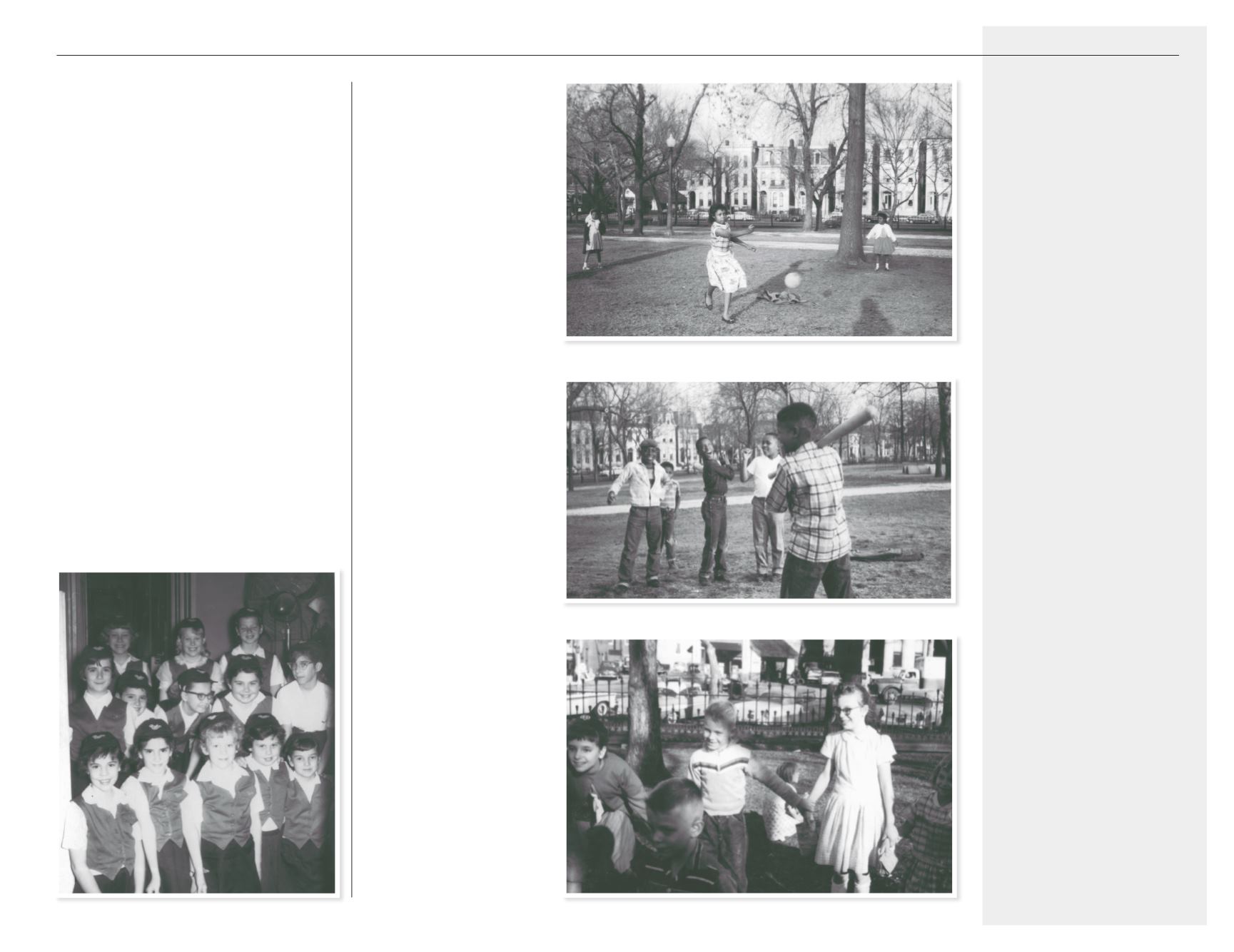

59
C
hapter
T
hree
:
‘S
uffer
the
C
hildren
…’ (1956 – 1977)
units (813 total units); 86% of these
were renter occupied; 80% had no
private bath or dilapidated; 21% had
no running water or dilapidated; 25%
had more than 1.5 persons/room; 32%
were African American occupied. The
average monthly rent was $25.53.
2
The
biggest concern for those living near
Kingdom House was not racial issues,
but basic adequate shelter.
Attempting to solve the city’s
housing crisis, the St. Louis Housing
Authority reported under “The South
Side Reconstruction Area”:
A large portion of the reconstruction area
between Chouteau Avenue, Sidney Street and
Jefferson Avenue and the Mississippi seem to
offer the most possibilities for future public
housing sites. The existing land use of this
study area is generalized on Plate No. 2. The
area is bisected by the Ozark Expressway,
under construction, and presently contains a
mixture of land uses. Only 3% of the entire
area of 928 acres is vacant.
U.S. Census figures disclose
that 43,016 persons live
in 12,932 dwelling units
in this area. Of the total
residential dwelling units,
87% are renter occupied;
72% have no private bath
and 31% have no running
water. This corresponds
almost exactly with the
overall conditions found in
the entire reconstruction
area.
In order to best plan
for public housing and to
propose site locations, it is
necessary to consider over-
all planning needs at least
in a general way...
3
Although surviving
documents indicate that
Kingdom House was
receptive to all persons
coming to be ministered
to, pictorial evidence
suggest few minorities
chose to do so. Although
historically many ethnic
groups found haven in
Kingdom House, few
African Americans
appear in the photo
documentation before
the Brown case. Mrs.
Ethel Koeppe remembers
integrating Kingdom
House after her husband
Ralph accepted the
position of Executive
Director in 1955. “It
was the children that
B
C
D
E
P
hotos
:
B:
Kingdom House Brownie
Troop
C:
Girls playing ball
D:
Baseball practice
E:
Friends
“I
t was
the
children
that
integrated
K
ingdom
H
ouse
–
wanting
to
come
and
play on
the
playground
. C
asually
,
not
some
formal
B
oard
decision
....”















